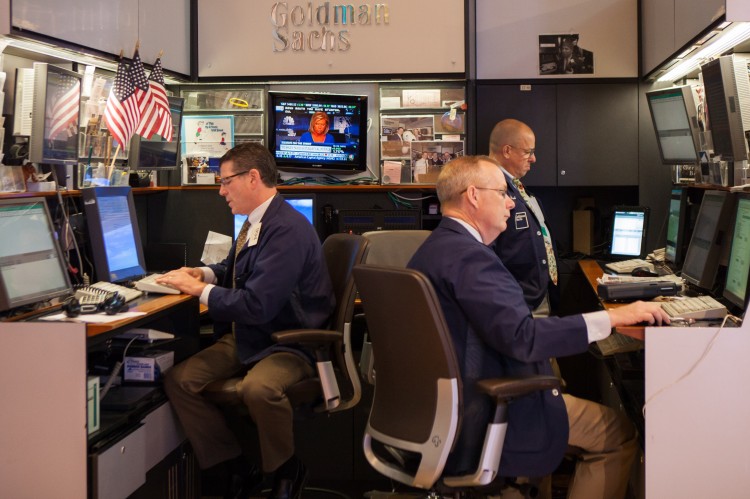Goldman Sachs announced third-quarter results Oct. 16, solidly beating Wall Street expectations. Q3 earnings per share came in at $2.85, well ahead of the $2.28 expected by analysts. Gains in proprietary trading drove the bottom line, as average 2012 worker compensation is poised to hit $404,172.
The investment bank delivered a strong rebound in 2012, after losing $0.84 per share in Q3 2011, a quarter that was marked by an accelerating crisis in the eurozone. In spite of soundly beating street expectations, Goldman shares dropped 1 percent Oct. 16 in what traders attribute to even higher “whisper” expectations after other big banks such as Wells Fargo and JP Morgan also reported solid earnings.
“Overall we see the quarter as a very solid performance in a generally poor environment—and we see a 9% ROE [Return On Equity] in a typically slow part of the year as a good step in the right direction,” writes Keith Horowitz of Citigroup in a report. The trend of continued good earnings from banks helped the S&P 500 to a 1 percent gain.
Revenues came in at $8.35 billion after expectations of $7.18 billion, up 133 percent from $3.59 billion in Q3 of 2011. Net income was $1.46 billion.
Proprietary Trading Delivers Most of Gains
The Investing and Lending division, or the firm’s proprietary trading desk, delivered most of the gains in revenue and net income. While the division lost $2.48 billion in Q3 2011, it made $1.8 billion in Q3 2012, a relative gain of $4.28 billion, accounting for almost all of its reported increase in revenue.
The company made good bets in private equity, listed equities, as well as debt securities, benefiting greatly from the Federal Reserve’s quantitative easing programs.
“Clearly, I&L [Investing and Lending] drove the quarter with $1.8B of net revenue (vs. $1.2B quarterly average since 1Q10), mostly on higher unrealized gains in private equity (management gave no hint on timing of monetization) and gains and income in debt securities with tighter credit spreads & central banks easing,” says a report by Nomura.
Since most of these gains are unrealized, it remains to be seen whether shareholders will actually see some real cash coming out of these transactions.
Other divisions, such as investment banking, investment management, and institutional trading execution and other services performed in line with expectations, but activity is still far from buoyant, “The real question for GS is how long do we have to wait for better activity levels,” says the Nomura report.
Good Year Ahead for Goldman Employees
Regardless of the direction trading activity is headed, Goldman employees can look forward to another good year of compensation. Goldman has a tradition of paying out 44 percent of revenues, which means that the firm’s 32,600 employees can look forward to receiving $3.68 billion—or $112,730 per employee—for this quarter alone.
Calculations by Zerohedge.com estimate the total annual compensation per employee to reach $404,172.
The Epoch Times publishes in 35 countries and in 19 languages. Subscribe to our e-newsletter.







